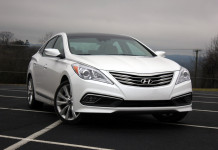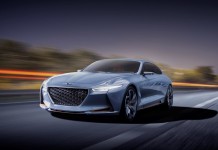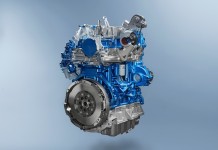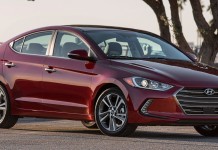Hyundai Motor Europe has added another vehicle to its Fluidic Sculpture design philosophy and its only for Europe. The second generation i30 compact will go on sale early 2012 as a 2013 and is loosely related to the North American Elantra. In 2007, the i30 model was launched and since then, it has earned over 360,000 European sales. In 2010, it was the highest selling european Hyundai and the brand plans on continuing that success with an all new design and powertrains.
“We expect the new-generation i30 to play a significant role in developing our sales and brand image in Europe, taking on the leading vehicles in the C-segment and joining the all-new i40 as a brand ambassador and quality benchmark for Hyundai,” said Allan Rushforth, Senior Vice President and COO of Hyundai Motor Europa.
Design wise, the i30 is, without-a-doubt, a Hyundai. Adopting the signature hexagonal-shaped grille, the company views the new car as the latest member of its family. The headlamps feature a jumble of twists and turns, blending almost perfectly with the bulging and sculpted front fenders. The front bumper house integrated fog lights that are lower than before, giving the little car an air of confidence. Initially only available as a five-door hatchback, the i30 has the quintessential european body as the rear is reminiscent of other hot-hatches such as the Vauxhall Astra.

Under the hood is where things get pretty interesting. A total of six engine options will be offered: three gasoline and three diesel. Hyundai expects a 50:50 sales split between the two fuel options. For the gasoline powered engines, a 1.4 liter is available as well as two 1.6 liter variants. All are Gamma family and DOHC with power ratings ranging from 98 horsepower for the 1.4 and 133 horsepower for the Gasoline Direct Injected (GDI) 1.6 liter. A european exclusive is Hyundai’s diesel engines, which in the new i30 range from a 1.4 liter and two 1.6 liters. These Variable Geometry Turbo (VGT) diesels produce 89 horsepower in 1.4 liter trim and 126 horsepower with the high-output 1.6 liter. Torque is a diesel’s specialty as 192 lb-ft is made from the high-output 1.6 liter VGT. All engines are matched either to Hyundai’s global six speeds: either an automatic or manual.

Inside the i30, the small car receives features usually reserved for a larger vehicle. Navigation is an option for the seven inch, center screen display with touch control. Dual-zone climate control is available as well as a large, panoramic sunroof. Overall, the second generation i30 is larger than before, increasing cargo capacity 10 percent from the previous model. The car is longer and wider, given it more interior volume and thus higher levels of comfort. Underneath and an oddity for a small car is a fully independent suspension. A multi-link set up is found in the rear instead of a torsion beam design. And connected to all of this will be Hyundai Europe’s five year “Triple Care” warranty.
Source: Hyundai









